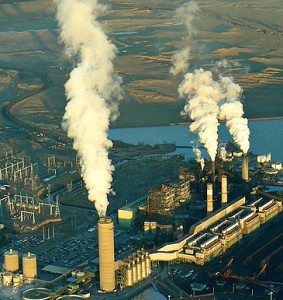PM 2.5
The New Particulate Standard and the Courts
The tough new air quality standard is sure to be challenged in court. Winning the challenges will be tougher.
EPA has just issued a rule tightening the air quality standard for PM2.5 — the tiny particles most dangerous to health — from an annual average of 12 μg/m³ (micrograms per cubic meter) down to 9 μg/m³. EPA estimates that, by the time the rule goes into effect in 2032, it will avoid 4500 premature …
Continue reading “The New Particulate Standard and the Courts”
CONTINUE READINGAggregating the Harms of Fossil Fuels
They’re even worse than you probably thought.
The decision at the Glasgow climate conference to phase down fossil fuels is an important step forward — and not just because of climate change. We think of fossil fuels as a source of climate change, but that’s only a one part of the problem. From their extraction to their combustion, everything about them is …
Continue reading “Aggregating the Harms of Fossil Fuels”
CONTINUE READINGGuest Blogger Nick Bryner: Cooking the Books While Cooking the Planet: A First Look at the EPA’s ACE Rule
Final Rule Changes Baseline Assumptions & Approach to Cost-Benefit Analysis in Attempt to Justify Weak Standards
Yesterday, the Trump EPA released its long-awaited response to the Obama-era Clean Power Plan. At first glance, the final rule has been carefully crafted in an attempt to avoid several glaring legal vulnerabilities of the rule—and to obscure the obvious inadequacy of the Administration’s response to climate change. The EPA has found many contradictory ways …
CONTINUE READINGThe Long, Slow Path to Improved Air Quality Standards
The regulatory process can be slow and tortuous. Consider the case of air quality standards. Since 1997, EPA has had separate air quality standards for fine particulates, technically called PM2.5. These tiny particles can penetrate deep into the lungs, making them a special public health concern. EPA has revisited the standard twice, in 2006 and …
Continue reading “The Long, Slow Path to Improved Air Quality Standards”
CONTINUE READINGDeadly spike in Beijing’s air pollution
This graph shows recent air quality monitoring data (PM 2.5) from the U.S. Embassy in Beijing. As the New York Times noted, this spike—seen as a thick haze in the city—has been described as “postapocalyptic.” Thanks in no small part to the Clean Air Act, we have thus far avoided the need to walk around …
Continue reading “Deadly spike in Beijing’s air pollution”
CONTINUE READINGThe PM2.5 Risk: Even Greater Than We Thought
The more we find out about ultra-fine particles called PM2.5, the more dangerous to health they seem to be. E&E News reports: The Beth Israel Deaconess Medical Center study, published in tomorrow’s Archives of Internal Medicine, found a “strong association” between exposure to fine-particle pollution and strokes. The study was funded in part by U.S. …
Continue reading “The PM2.5 Risk: Even Greater Than We Thought”
CONTINUE READING




